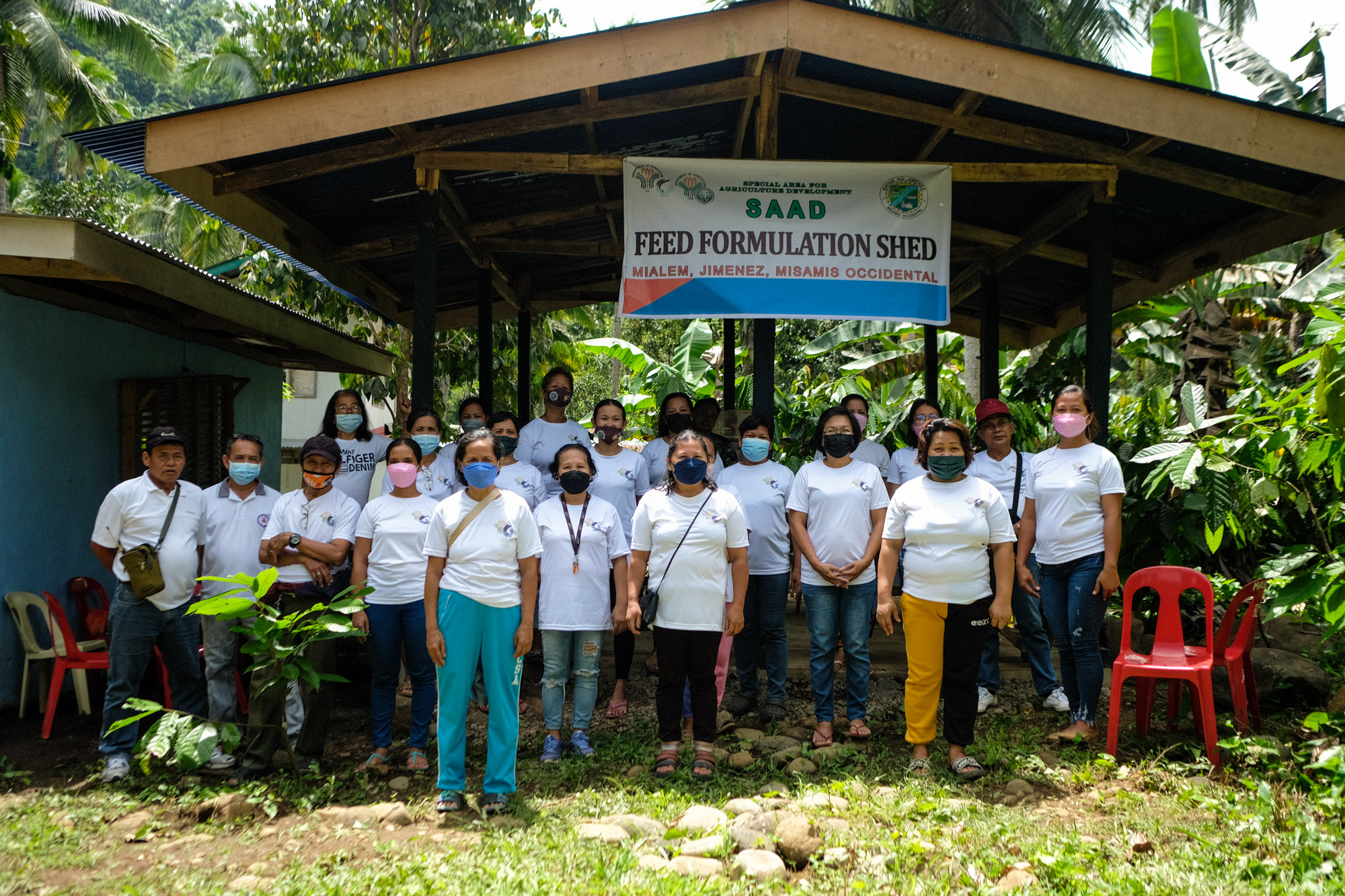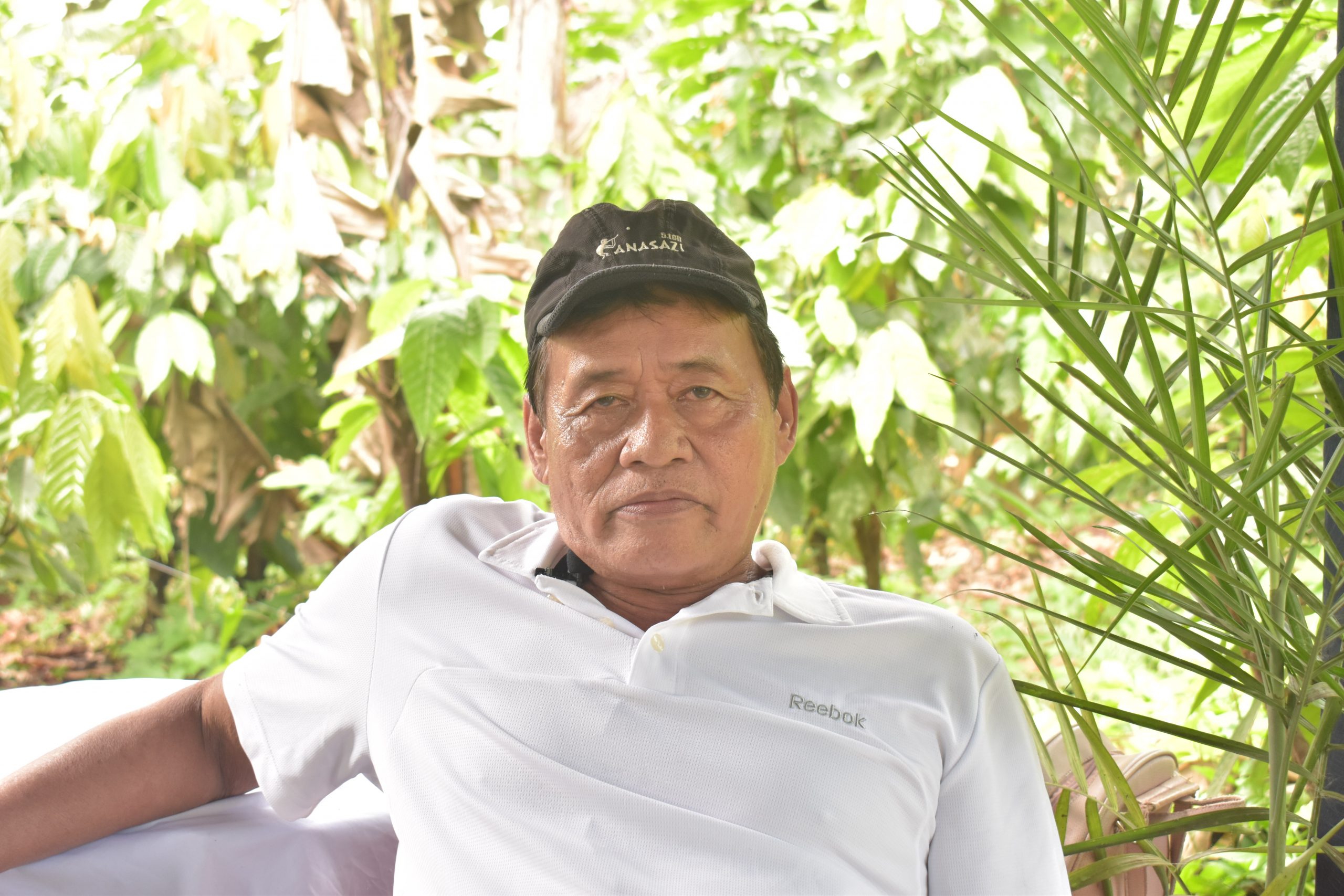How it started
Tilapia (Oreochromis niloticus) is a species growing in freshwater across the Philippines, that contains niacin, vitamin B12, phosphorus, selenium, and potassium and is, therefore, a staple commodity at the dinner table among Filipino families.
From a mere backyard hobby, complemented by the green atmosphere on the lowland valley across the roaring Palilan River, tilapia culture has gradually become an economically viable aquaculture activity in the area.
Considering its benefits, tilapia farming has spread out among farmers converting non-productive rice and swampy areas into usable ponds. The hardy fish is easy to grow, after five to six months of culture, the grower can either sell it in the market or apportion it for family consumption for a more self-reliant and healthier lifestyle.
In September 2019, the Bureau of Fisheries and Aquatic Resources (BFAR) introduced the Special Area for Agricultural Development (SAAD) Program to the fisherfolk in Misamis Occidental.
Mixed-crop farmers in the municipality of Jimenez who are practicing pond tilapia culture were chosen as one of the program’s beneficiaries for aquaculture assistance.
Twenty-four (24) fisherfolk in Barangay Mialem and six (6) in Barangay Carmen formed the fishers group called Mialem-Carmen Tilapia Growers Association in Jimenez and received assistance for the program’s Tilapia Culture in Pond and Satellite Hatchery Operation project.
Members of the group are corn and banana growers whose monthly income ranged from Php 7,000 to Php 8,000.

After the successful assessment and evaluation of project sites based on the program guidelines, the 30 members of the group each have at least 300 square meters (sqm) of pond area viable for tilapia farming.
To ensure effective project management, BFAR conducted various training for the beneficiaries. This includes Tilapia Culture in Pond which discussed technical procedures for proper stocking, proper feeding management, monitoring, and harvesting.
Further, the farmers also received Training in Marketing, Trading, and Other Related Business Activities which aims to capacitate and enhance their knowledge in marketing and value-addition of products.
Fishery inputs include supplies and materials for pond preparation, tilapia fingerlings, feeds (good for two croppings), tilapia hatchery facility and inputs (breeders and feeds), mini-processing shed, and processing utensils and equipment, fish dryers, feed formulation shed and equipment, amounting to Php 1,102,131.50.
According to Mr. Infiesto, the group vice-chairman, tilapia requires ample attention to details and processes of raising such as clean water, oxygen, food, light, and room to swim, stay healthy and grow fast.
When they received the project in 2020, they immediately cultured the fingerlings in each pond area. A total of 60,000 fingerlings were stocked in March. By maintaining favorable environmental conditions and proper feeding, the fish are ready for harvesting after 5-6 months.
The first tilapia farming operation which provided the group with a consolidated income of Php 553,150 helped with their daily needs, especially during the lockdown (brought by the COVID-19 pandemic). The group had patrons in the nearby towns where fish supplies are limited (Table 1).
Harvesting of fish is done on a staggered basis, selecting the bigger sizes for the market. Tilapia were easily sold in the neighborhood and middlemen set bookings prior to the harvest. They sold it fresh at Php 130/kg.
Fingerlings were sold at Php 0.25/pc.
“Makaingon ko nga na-improve ang panginabuhi sa miyembro kay gawas nga maka-income me, makasud-an pa gyud among matag pamilya ug presko nga tilapia. So, ang among budget para sa sud-an, amo ng matigom,” shared Mr. Infiesto.
(I can say that each members’ life has improved, not just due to the additional income but also each of our families has enjoyed eating fresh tilapia. So, we can now save our budget for buying viand.)
He added that the free livelihood inputs from SAAD are a big advantage for them – just like the commercial feeds which they could not afford to buy, as well as the fish processing materials.
Consumers also attest that the taste difference of tilapia produced by MCTGA has no muddy smell and is palatable.
For this years’ culture operation, they already stocked fingerlings in each pond area last January to February. Harvest is expected after 6 months.
To date, the group has already earned Php 1,288,690 from selling fresh tilapia (Table 1).Table 1. MCTGA tilapia production data
|
Date of Harvest |
Total Harvest (kg) |
Gross Income |
| 2020 | ||
| September-December | 4,255 |
553,150.00 |
| 2021 | ||
| June-September | 4,023 |
522,990.00 |
| 2022 | ||
| January-February | 1,635 |
212,550.00 |
|
Total |
9,913 |
1,288,690.00 |
Tilapia processing
In 2022, the group tried tilanggit production using the knowledge acquired by some members from the training provided by BFAR-SAAD last year.
In two to three months, each member harvests at least 2-3kg of fish weighing 20-30 grams which are then processed to produce boneless dried tilapia sold at Php 400/pack.
Group treasurer, Liwayway Puliran said that they market their product through personal social media accounts.
“Gipaningkamotan namo nga madeliver namo og sakto especially sa mga naa sa lagyo, kay dili naman sila muanhi diri kay layoan na. Isa sa among nasabotan nga mag create mig facebook page sa among grupo para direct sila makamessage sa amoa, ideliver nalang pud namo sa ilaha, mas easy ni nga way para sa mga customers,” said Ms. Puliran.
(We did our best to deliver it right to buyers living from afar. One of our agreements is to create a Facebook page for our group so that they can message us directly, and deliver the product to them, to make it more convenient for our buyers.)
Two months after engaging in tilapia processing, MCTGA recorded an income of Php 20,000.00.

“Gamay ra gyud kayo mig income sa among farming kay gumikan niining sa tempo nato, dayon mag maisan mi, initon og sambolan, edi masangag ang among mga mais. Didto nalang mi magfocus sa among fishpond, atimanon namog maayo ang fishpond. Pareha nako karon naa koy anak nga college, nakatabang gyud nig bayad sa eskwelahan, dako gyud kaayo ni siyag ikatabang kay nahalinan mi, nalipay unta mi kay nahilam mig kwarta, napadulong hinuon sa eskwelahan, pero sige lang kay nakasulbad man ni sa among problema,” said Ms. Jennifer Balagot, the group secretary.
(We only have a little income from our farm because of the weather. We planted corn but too much heat dried it. So, we focused on our fishpond and took care of it religiously. Because, like me, I have a college student and my earnings from selling tilapia allowed me to pay for my child’s fees.)
Ms. Balagot is also hopeful to avail of another round of training on tilanggit-processing for the group because not all members were able to participate due to minimal physical contact restrictions in the previous session.

“Sa individual income namo sa tilapia, maghatag ug Php 200 kada harvest sa members. Kaduha me sa isa ka tuig mu-harvest so Php 400 na. Dayon, e deposit namo sa among bangko,” said Mr. Infiesto referring to the group sharing policy.
(From our individual income, members are obliged to give Php 200 every harvest. We harvest two cropping seasons a year, so that’s Php 400, and we deposit it in the group’s bank account.)
Group members also pay for the Php 20 membership fee and another Php 20 for the monthly dues. Penalties are also imposed for those absent during meetings.
“Nindot gyud siya nga program nga gihatag sa amo gikan sa DA-BFAR og through LGU. Dako siyag natabang sa amoa isip farmer, kay sa amoa man gud diri, abunda kaayo mig tubig so gamit kaayo para mag himog fish pond. So, dako siyag natabang sa amo, especially sa among daily needs gyud. Kay sauna muadto pa mig lungsod, unya mahal baya kaayo ang isda, whereas karon mapasayon kay naa name among kaugalingon. Dayon sa among income dako pud siyag natabang,” averred Ms. Puliran.
(This is a good program provided to us from DA-BFAR through LGU. It’s a big help to us farmers because here, we have an abundant source of water, which is very useful for excavation to create a fish pond in our areas. So, it’s a big help for us, especially for our daily needs. Before, we used to go to the market in town, but the fish is expensive. Compared now, we have it cultivated in our area, and we get income from this.)
Problems Encountered and Solutions Made
Considering that the fingerlings were sourced out from Bukidnon (5 to 7 hours’ travel), delay in the barge across to Ozamis City resulted in high mortalities of tilapia due to stress during the transport.
To resolve the said problem, MCTGA’s proposed tilapia satellite hatchery project will operate this year that can readily supply the seed stock needed for their pond areas.
Plans
The pandemic hampered the series of training that the group needed to pursue. This 2022, they are hoping for hands-on activities and experiences in feed formulation so that they can produce alternative food for their fish, and to expand their market to other tilapia growers within and outside the municipality.
The initiative will help the group sustain the project by totally eliminating their commercial feeds expenses. With that, they may expand their pond areas too.
With the mini-processing shed provided, the group is now continuously making tilanggit that will carry the group’s branding for packaging to attract more customers.
Writer: Jennifer Valcobero, SAAD NPMO Public Relations and Comms Officer
Sources: BFAR-SAAD 10, PFO Misamis Occidental
Photos by:
Bart Manoguid, SAAD NPMO Public Relations and Comms Officer
BFAR-SAAD 10









Comments (0)